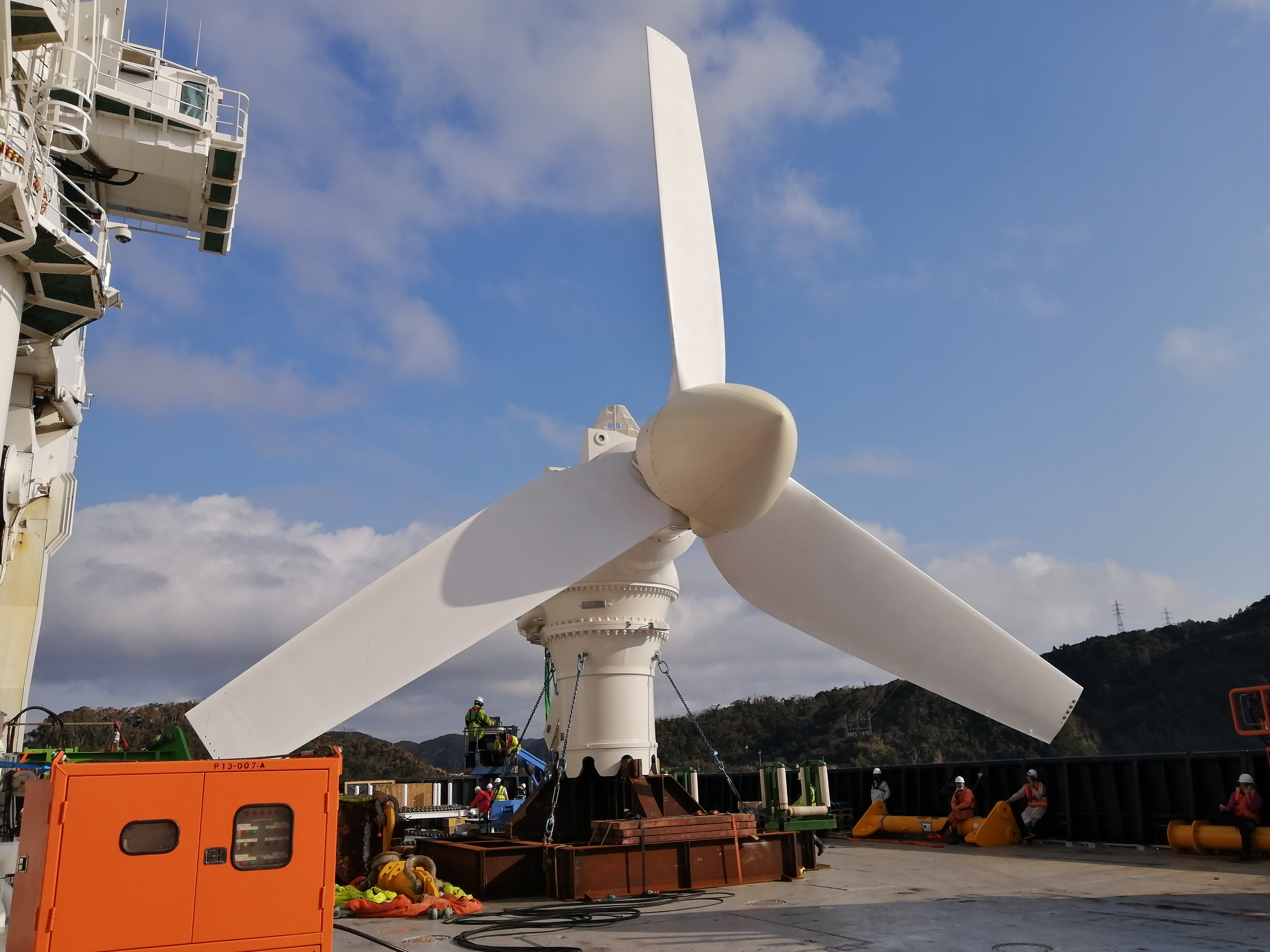
AR500 turbine waiting to be installed in the waters of the Goto Islands, Japan.
A tidal turbine built and tested in Scotland has been installed in the waters of a Japanese island chain, the latest example of how the East Asian country is investigating the potential of marine-based forms of energy production.
In a statement on Monday, London-based company Simec Atlantis Energy said its pilot turbine generated 10 megawatt-hours in the first 10 days of operation.
The AR500 turbine was put together in a plant in Scotland before being shipped to Japan, where it was installed in the waters off Naru Island, which is part of the larger Goto chain.
According to the SAE, the overall project involves the leasing of tidal generation equipment as well as the provision of offshore construction services to the Japanese company Kyuden Mirai Energy.
SAE CEO Graham Reid described the facility as a “huge step in implementing clean and renewable energy from the tidal flow and hopefully will be the first of many tidal turbines installed in Japan.”
Monday’s news marks the latest example of how companies in Japan, an island nation that prides itself on thousands of miles of coastline, are moving toward wave and wave energy-focused projects.
In January, it was announced that shipping giant Mitsui OSK Lines would partner with a company called Bombora Wave Power to expand potential project sites in Japan and surrounding regions.
The collaboration between Tokyo-based MOL and Bombora will focus on finding possible locations for the latter’s mWave system, as well as on hybrid projects that combine mWave and wind energy.
In simple terms, the technology developed by Bombora – which has offices in both the UK and Australia – is based on the idea of using “cells” with rubber membranes, which are filled with air and mounted on a submerged structure. underwater.
According to a company video outlining how its system works, when waves pass over the system, “its flexible rubber membrane design pumps air through a turbine to generate electricity.”
The International Energy Agency describes marine technologies as having “great potential”, but adds that additional support is needed for research, design and development policies to “reduce the costs that come with the commissioning of more commercial facilities.” big”.
For its part, Japan says it wants renewables to account for 22% to 24% of its energy mix by 2030.
In October last year, Prime Minister Yoshihide Suga said the country would target net greenhouse gas emissions by 2050. By 2030, Japan wants a 26% reduction in greenhouse gas emissions compared to 2013. .
However, efforts are still needed for the country to achieve its goals. In 2019, its Agency for Natural Resources and Energy said the country “is heavily dependent on fossil fuels,” such as coal, oil and liquefied natural gas.